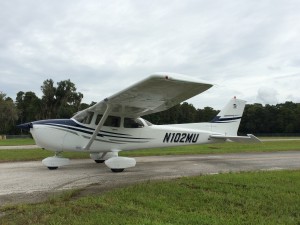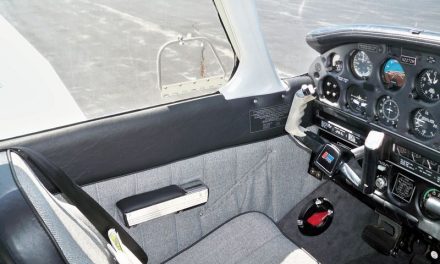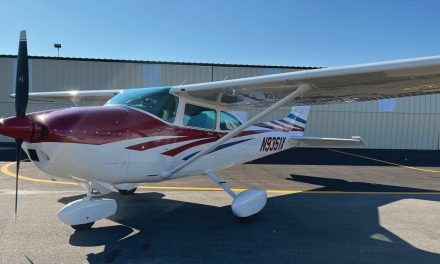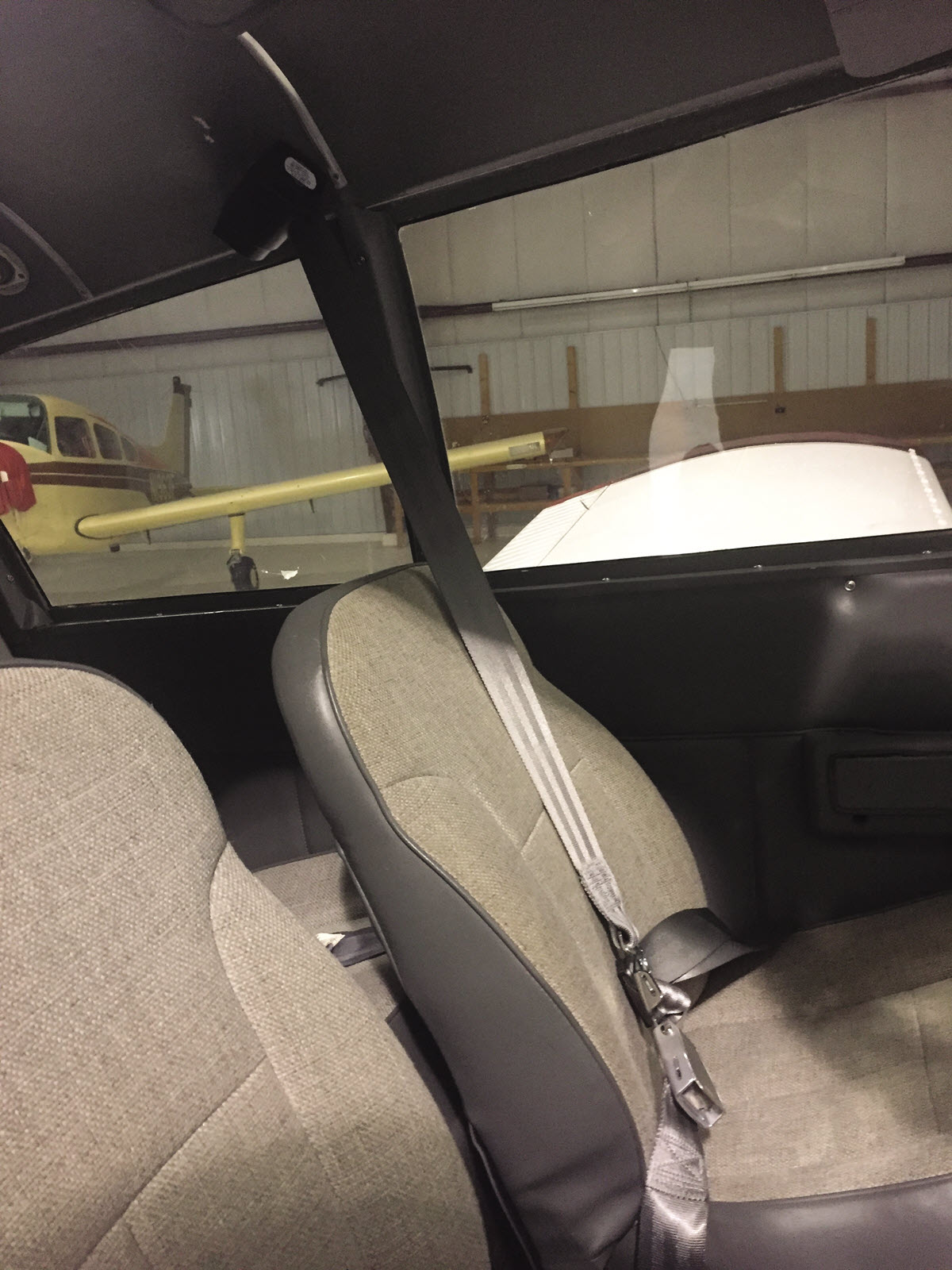 The Transformation of N102MU
The Transformation of N102MU
Project Plane Inspires Full-service Approach to Buy, Renovate and Sell Aircraft for Others
By Roger Battistoni – MultiCorp Aviation
Approximately 15 years ago, I was looking to purchase my first aircraft. Although I was already a professional pilot, I knew nothing about purchasing an aircraft, how to best set up the aircraft to shield liability, or any of the other intricacies of the process—nothing!
Naturally, I began to search for a company to represent me; the aircraft buyer. After all, I wouldn’t think about buying real estate without an agent or a broker and I don’t do my own taxes—that’s what accountants are for. So, why would I purchase an aircraft without someone in my corner?
I proceeded to call a few area brokers and much to my surprise they all said that same thing: “Sure, we help people purchase aircraft.” After talking to one of them for several hours, I distinctly remember his response: “Sounds like you need a Cessna 182. In fact, I just happen to have the perfect aircraft to sell you!” It was then that I realized that the type of service I was looking for was lacking (at best). It seems that most of the brokers I dealt with were simply trying to push whatever they had in inventory. From that moment on, I was determined to make a difference for others.
My first step was to learn the process—that’s where N102MU comes in. I didn’t want to cut my teeth purchasing an aircraft for someone else. Instead, I wanted to make the “mistakes” on my own aircraft. I’m the type of person who throws himself into an idea and will spend thousands of hours researching, asking questions, and then researching some more. For my first project I wanted an aircraft that had a proven track record of maintenance. As a graduate of Embry-Riddle Aeronautical University, I knew their airplanes were, as they say, “ridden hard and put away wet.” However, I also knew they were very well-maintained. This aspect made one of their planes the perfect candidate for a trial purchase. Embry-Riddle tends to get rid of their aircraft approximately every four years to limit liability and reduce maintenance expenditures. So, I purchased one of these “retired” trainers, set up an LLC to house the aircraft and reduce liability, and learned (the hard way) about state sales tax.
Though it was clearly a used airplane in need of paint, interior and avionics upgrades, and an engine, I wanted to make it “new” again. As someone who rarely owns anything (especially cars) longer than a few years, I’m rather meticulous. Some might even call it OCD! After a couple of months of learning the refurbishment process (and making a lot of mistakes along the way), the plane was complete. I flew it for a couple of months until a good friend (also a professional pilot and a fellow crew member at the same company I work for) said that he wanted a 172 of his own. It was a perfect fit for him, so we completed the deal and he got to enjoy the benefits of all the hard work.
On to the next plane! This time the project was a Socata TB9, another former Embry-Riddle trainer also in need of an engine, avionics upgrades, paint, and interior. However, this one was in worse shape cosmetically. The refurbishing of this aircraft helped me learn everything about that particular design—the good, the bad and the ugly. It was then that I began to realize the extreme variations in the quality of aircraft maintenance performed in the U.S.—some of which are downright dangerous. For example, the TB9 had an autopilot and every time I clicked the mic with the altitude hold on, the plane would nosedive! We discovered the company that installed the autopilot had run too much wire back to the altitude servo and simply bundled up and left the excess wire. This length of excess wire was nearly the exact length of a COM frequency wave and was acting like an antenna! After a call to the installation company, they promptly paid to have the issue corrected.
It was experience like this that I vowed to never put my family on or in an aircraft that hadn’t been fully refurbished. Over the years, I’ve run across something in nearly every aircraft that I’ve owned that could have killed me and/or my family. I also realized, more and more, that there was a glaring need for someone to represent the aircraft buyer.
When the TB9 was done it was again time to sell the plane and move on to the next project. I continued to learn and improve upon the entire process by working on a variety of aircraft ranging from Cessnas, Pipers, Socatas, Bonanzas, and Commanders to pressurized Cessnas, Mooneys, Rockwell Commanders, Fuji Commanders, King Airs, Libertys…the list goes on—all of them purchased, refurbished, and resold.
Some time ago, another pilots association published an article on what they described as the “12 steps” to purchasing an aircraft. I thought this was absolutely ridiculous. Twelve steps? It’s more like 100 steps in real life! I even confronted an executive of that association and asked him straight out: “If I put together a pamphlet on the 12 steps to purchasing a home, would you let your children purchase a house without a broker?” Of course, his answer was “No!”
In my opinion, it seems there is an almost inherent aura of machismo (if not outright arrogance) in some pilots. It’s as if they think: “Why do I need help? I’m a pilot, I know all!” Unfortunately, as a result of this attitude, I’ve seen many such pilots/owners make horrible mistakes during the acquisition process. Mistakes that not only cost them thousands, but, in some cases, their marriages! Determined to do something about this, I created the idea of a company almost exclusively focused on the aircraft buyer and MultiCorp Aviation was born.
Though some aspects of the business plan may have changed over the years, the original concept of providing affordable service at a flat rate has remained. From the start, I didn’t want buyers to feel like they were being charged by the hour, so I implemented the following simple flat rate fee structure: $1000 for the purchase of a single engine aircraft; $2000 for a multi-engine; $3000 for a pressurized aircraft; $4000 for a turbo prop; and $5000 for a jet. Using these predetermined rates, we sit down with owners to determine the best aircraft type for their needs. We put together a feasibility study with a market analysis and history of the type, along with a budget based on the customer’s mission. We then go out into the market to find the aircraft on their behalf and assist in negotiating the deal, obtaining financing, training, pre-purchase inspections, and even refurbishment. We also focus on the investment potential of the purchase. ALL aircraft purchases need to be viewed as investments. Someday an owner will want or need to sell and taking a preverbal “financial bath” on what can be a large investment is not something anyone wants to do. Yet, it happens oh so much—largely because the deal was wrong from the beginning.
Over the years, MultiCorp has become an industry leader when it comes to refurbishments and upgrades. As a professional pilot with well over 10,000 hours, I can put together a panel that makes sense in terms of redundancy and as a wise investment. Sure, you could listen to the avionics companies on what you should put in your plane, but it’s worth noting that most of the reps you communicate with are not pilots. Plus, the more they convince you put on your plane, the more money they make. That’s not to say that all avionics companies are like that, but there is certainly an underlying motive to up-sell.
The same is true for mechanics. I often hear from aircraft owners who say, “My mechanic told me I should purchase the plane.” Mechanics are good resources, but again, they make their money from your aircraft breaking. Plus, do they really know what a good investment is or what is selling and what is not?
People ask me all the time, “You spend so much time helping me purchase a plane and you’re doing it for only $1000. What’s the catch?” There is no catch! We look at our customers over a lifetime, not a single transaction. In fact, we have customers who are on their 5th different aircraft with us. As they gain experience, we sell their current airplane and move them up into the next plane that matches their changing needs or skillset. Besides, I make a good living flying professionally, and I want to build General Aviation—even if it’s one buyer at a time. If a buyer has a good experience, the plane fits his budget or mission, and he makes more money when it’s time to sell, he’s more likely to remain involved in aviation for a long time.
That brings me back to my first purchase—N102MU. Recently, after 10 years of flying, it was in need of a cosmetic overhaul, so my aforementioned friend called me up. After we got it painted and the interior redone, we sold it to a new owner who plans to use it at their own flight school. Now my friend is going to want another aircraft! As you can see, it’s a symbiotic relationship and one that keeps going around.
In the end, if you’re looking to purchase a plane I highly recommend hiring an expert to help you through the process. Even after all the years and all the purchases we’ve have gone through (sometimes up to 6 per month for both domestic and international clients) there’s something in every deal that still surprises me!





